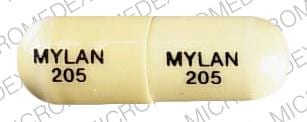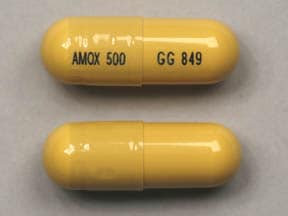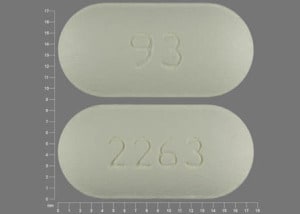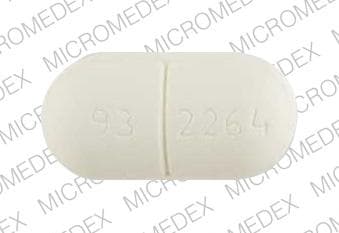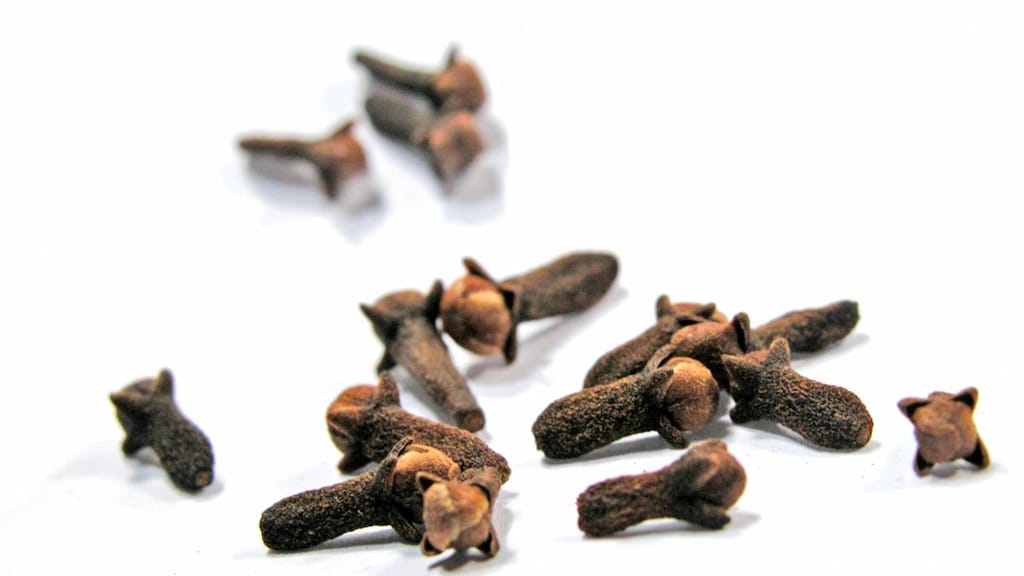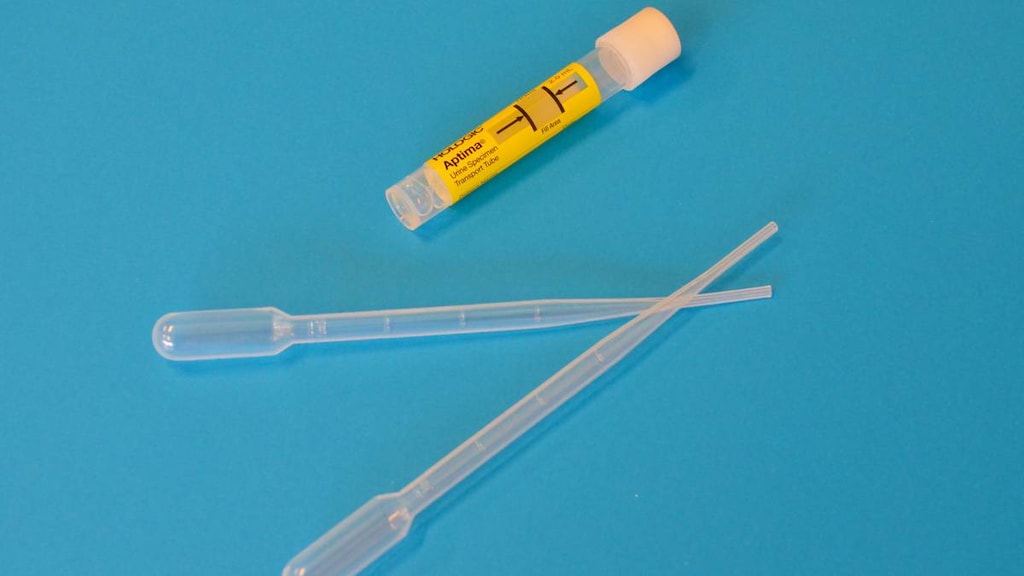Dosage Forms
Excipient information presented when available (limited, particularly for generics); consult specific product labeling. [DSC] = Discontinued product
Capsule, Oral:
Generic: 250 mg, 500 mg
Suspension Reconstituted, Oral:
Generic: 125 mg/5 mL (80 mL, 100 mL, 150 mL); 200 mg/5 mL (50 mL, 75 mL, 100 mL); 250 mg/5 mL (80 mL, 100 mL, 150 mL); 400 mg/5 mL (50 mL, 75 mL, 100 mL)
Tablet, Oral:
Generic: 500 mg, 875 mg
Tablet Chewable, Oral:
Generic: 125 mg, 250 mg
Tablet Extended Release 24 Hour, Oral:
Moxatag: 775 mg [DSC] [contains cremophor el, fd&c blue #2 aluminum lake]
Generic: 775 mg [DSC]
Pharmacology
Mechanism of Action
Inhibits bacterial cell wall synthesis by binding to one or more of the penicillin-binding proteins (PBPs) which in turn inhibits the final transpeptidation step of peptidoglycan synthesis in bacterial cell walls, thus inhibiting cell wall biosynthesis. Bacteria eventually lyse due to ongoing activity of cell wall autolytic enzymes (autolysins and murein hydrolases) while cell wall assembly is arrested.
Pharmacokinetics/Pharmacodynamics
Absorption
Oral: Immediate-release: Rapid with or without food
Extended-release: Rate of absorption is slower compared to immediate-release formulations; food decreases the rate but not extent of absorption
Distribution
Readily into liver, lungs, prostate, muscle, middle ear effusions, maxillary sinus secretions, bone, gallbladder, bile, and into ascitic and synovial fluids; poor CSF penetration (except when meninges are inflamed)
Excretion
Urine (60% as unchanged drug); lower in neonates
Time to Peak
Capsule; oral suspension: 1 to 2 hours; Chewable tablet: 1 hour; Extended-release tablet: 3.1 hours
Half-Life Elimination
Adults: Immediate-release: 61.3 minutes; Extended-release: 90 minutes
Protein Binding
~20%
Use: Labeled Indications
Ear, nose, and throat infections (pharyngitis/tonsillitis, otitis media):
Immediate release: Treatment of infections due to beta-lactamase-negative Streptococcus spp. (alpha- and beta-hemolytic isolates only), Streptococcus pneumoniae, Staphylococcus spp., or Haemophilus influenzae.
Extended release: Treatment of tonsillitis and/or pharyngitis due to Streptococcus pyogenes in adults and pediatric patients ≥12 years of age.
Genitourinary tract infections: Immediate release: Treatment of infections of the genitourinary tract due to beta-lactamase-negative Escherichia coli, Proteus mirabilis, or Enterococcus faecalis.
Helicobacter pylori eradication: Immediate release: Eradication of H. pylori to reduce the risk of duodenal ulcer recurrence as a component of combination therapy in patients with active or 1-year history of duodenal ulcer disease.
Lower respiratory tract infections (including pneumonia): Immediate release: Treatment of infections of the lower respiratory tract due to beta-lactamase-negative Streptococcus spp. (alpha- and beta-hemolytic strains only), S. pneumoniae, Staphylococcus spp., or H. influenzae.
Rhinosinusitis, acute bacterial: Immediate release: Treatment of infections due to beta-lactamase-negative Streptococcus spp. (alpha- and beta-hemolytic isolates only), S. pneumoniae, Staphylococcus spp., or H. influenzae.
Skin and skin structure infections: Immediate release: Treatment of infections of the skin and skin structure due to beta-lactamase-negative Streptococcus spp. (alpha- and beta-hemolytic strains only), Staphylococcus spp., or E. coli.
Use: Off Label
Actinomycosisc
Data from a small retrospective study suggest that amoxicillin may be beneficial for the treatment of actinomycosis Bonnefond 2016. Clinical experience also suggests that amoxicillin may be beneficial in managing actinomycosis Valour 2014
Anthraxyes
Based on the Centers for Disease Control and Prevention (CDC) recommendations for the prevention and treatment of anthrax in adults, amoxicillin is an effective and recommended alternative drug in the management of postexposure prophylaxis of inhalational anthrax or treatment of cutaneous anthrax (without systemic involvement) in patients with documented susceptible organisms CDC [Hendricks 2014].
Asplenia, prophylaxis against bacterial infection in high-risk patientsc
Clinical experience suggests the utility of amoxicillin to prevent bacterial infections in high-risk patients with functional or anatomic asplenia Coignard-Biehler 2010, Pasternack 2018.
Bronchiectasiscyes
European Respiratory Society guidelines for the management of adult bronchiectasis recommend long-term treatment with an oral antibiotic (such as amoxicillin) (choice based on antibiotic susceptibility and patient tolerance) for adults with bronchiectasis and ≥3 exacerbations per year who are not infected with P. aeruginosa in whom macrolides are contraindicated. Data from a small number of patients suggest the utility of long-term amoxicillin to reduce severity of exacerbations in patients with bronchiectasis Currie 1990.
Data from a limited number of patients studied suggest that amoxicillin may be beneficial in the treatment of acute exacerbations of bronchiectasis Prigogine 1988. Clinical experience also suggests the utility of amoxicillin in managing bronchiectasis Barker 2018.
Endocarditis, prophylaxisyes
Based on the American Heart Association (AHA) guidelines for the prevention of infective endocarditis, amoxicillin is effective and recommended for patients with certain cardiac conditions who are able to take oral medication to provide prophylaxis against infective endocarditis associated with dental or respiratory tract procedures and for patients undergoing genitourinary procedures to eradicate enterococci from the urine unless a known or suspected strain of resistant enterococci exists.
Lyme disease (Borrelia spp. infection)yes
Based on the Infectious Diseases Society of America (IDSA) guidelines for the clinical assessment, treatment, and prevention of Lyme disease, human granulocytic anaplasmosis, and babesiosis, amoxicillin is effective and recommended for the treatment of early localized Lyme disease (eg, erythema migrans), early disseminated Lyme disease (isolated facial nerve palsy [when doxycycline is contraindicated] or mild carditis), or late Lyme disease (arthritis without neurologic involvement, acrodermatitis chronica atrophicans).
Periodontitis, severeb
Data from a small, randomized, double-blind study support the use of amoxicillin, in combination with metronidazole as well as scaling and root planing, in the treatment of periodontitis Silva-Senem 2013. In addition, clinical experience suggests the use of amoxicillin, in combination with metronidazole and scaling and root planing, in the treatment of severe periodontitis Wilder 2019.
Prosthetic joint infectionyes
Based on the IDSA guidelines for the management of prosthetic joint infection (PJI), amoxicillin is an effective and recommended agent for chronic oral antimicrobial suppression of PJI with beta-hemolytic streptococci, Enterococcus spp. (penicillin susceptible), and Cutibacterium spp. after completion of parenteral therapy.
Contraindications
Serious hypersensitivity to amoxicillin (eg, anaphylaxis, Stevens-Johnson syndrome) or to other beta-lactams, or any component of the formulation
Canadian labeling: Additional contraindications (not in US labeling): Infectious mononucleosis (suspected or confirmed)
Dosage and Administration
Dosing: Adult
Note: Unless otherwise specified, all dosing recommendations based on immediate-release product formulations.
Usual dosage range:
Immediate release: Oral: 500 mg to 1 g every 8 to 12 hours
Extended release: 775 mg once daily
Actinomycosis (off-label use):
Note: For initial therapy of mild infections or step-down therapy following parenteral treatment of severe infections.
Oral: 500 mg 3 to 4 times daily or 1 g 3 times daily (Martin 1984; Paulo 2018; Sharkaway 2018; Shikino 2015); higher doses of 4 to 6 g/day in divided doses have been utilized in case reports (Moghimi 2013; Valour 2014). Optimal duration of therapy is unknown; some experts suggest 2 to 12 months, depending on severity of infection and response to therapy (Sharkaway 2018).
Anthrax (alternative agent for penicillin-susceptible strains) (off-label use):
Note: Consult public health officials for event-specific recommendations. A high index of suspicion for emergent beta-lactam resistance during therapy is warranted (Wilson 2019).
Inhalational exposure postexposure prophylaxis: Oral: 1 g every 8 hours for 60 days. Note: Anthrax vaccine should also be administered to exposed individuals (CDC [Hendricks 2014]).
Cutaneous, without systemic involvement: Oral: 1 g every 8 hours; duration is 60 days following biological weapon-related event and 7 to 10 days after naturally acquired infection. Note: Patients with cutaneous lesions of the head or neck or extensive edema should be treated with a parenteral regimen recommended for systemic involvement (CDC [Hendricks 2014]).
Asplenia, prophylaxis against bacterial infection in select high-risk patients (off-label use): Oral: Based on expert opinion: 500 mg twice daily. Duration varies based on patient-specific factors (Pasternack 2018).
Bronchiectasis (off-label use):
Treatment of pulmonary exacerbations in patients without beta-lactamase-positive Haemophilus influenzae or Pseudomonas aeruginosa: Oral: 500 mg 3 times daily (Barker 2018; Finegold 1981) or 1 g 3 times daily (Prigogine 1988) for up to 14 days (Barker 2018; ERS [Polverino 2017]).
Prevention of pulmonary exacerbations: Oral: 500 mg twice daily; dosing based on expert opinion (Barker 2018). Note: Recommended for patients with ≥3 exacerbations per year who are not colonized with P. aeruginosa and not candidates for long-term macrolide therapy (Barker 2018; ERS [Polverino 2017]).
Endocarditis, prophylaxis (dental or invasive respiratory tract procedures) (off-label use): Oral: 2 g 30 to 60 minutes before procedure. Note: Only recommended for patients with cardiac conditions associated with the highest risk of an adverse outcome from endocarditis and who are undergoing a procedure likely to result in bacteremia with an organism that has the potential ability to cause endocarditis (AHA [Wilson 2007]).
Helicobacter pylori eradication: Oral:
Clarithromycin triple regimen: Amoxicillin 1 g twice daily in combination with clarithromycin 500 mg twice daily, plus a standard-dose or double-dose proton pump inhibitor; continue regimen for 14 days. Note: Avoid use in patients with risk factors for macrolide resistance (eg, prior macrolide exposure or local clarithromycin resistance rates ≥15%, which is assumed in the United States) (ACG [Chey 2017]; Fallone 2016).
Concomitant regimen: Amoxicillin 1 g twice daily in combination with clarithromycin 500 mg twice daily, either metronidazole or tinidazole 500 mg twice daily, plus a standard-dose proton pump inhibitor twice daily; continue regimen for 10 to 14 days (ACG [Chey 2017])
Sequential regimen (alternative regimen): Amoxicillin 1 g twice daily plus a standard-dose proton pump inhibitor twice daily for 5 to 7 days; followed by clarithromycin 500 mg twice daily, either metronidazole or tinidazole 500 mg twice daily, plus a standard-dose proton pump inhibitor twice daily for 5 to 7 days; some experts prefer the 10-day regimen due to the lack of data showing superiority of the 14-day sequential regimen in North America (ACG [Chey 2017]; Crowe 2018).
Hybrid regimen (alternative regimen): Amoxicillin 1 g twice daily, plus a standard-dose proton pump inhibitor twice daily for 7 days; followed by amoxicillin 1 g twice daily, clarithromycin 500 mg twice daily, either metronidazole or tinidazole 500 mg twice daily, plus a standard-dose proton pump inhibitor twice daily for 7 days (ACG [Chey 2017]).
Levofloxacin triple regimen (salvage regimen): Amoxicillin 1 g twice daily in combination with a standard-dose proton pump inhibitor twice daily plus levofloxacin 500 mg once daily; continue regimen for 10 to 14 days (ACG [Chey 2017]).
High-dose dual therapy (salvage regimen): Amoxicillin 750 mg 4 times daily or 1 g 3 times daily; in combination with a standard-dose or double-dose proton pump inhibitor 3 to 4 times daily for 14 days (ACG [Chey 2017]).
Lyme disease (Borrelia spp. infection) (off-label use):
Early localized (eg, erythema migrans): Oral: 500 mg 3 times daily for 14 to 21 days (IDSA [Wormser 2006])
Early disseminated, carditis (initial therapy for mild disease [first-degree atrioventricular block with PR interval <300 msec] or step-down therapy after initial parenteral treatment for more severe disease once PR interval <300 msec): Oral: 500 mg 3 times daily for 14 to 21 days (Hu 2018; IDSA [Wormser 2006]); for step-down therapy, some experts prefer a total antibiotic duration of 21 to 28 days (Hu 2018).
Early disseminated, mild neurologic involvement (isolated facial nerve palsy [no evidence of meningitis]) (alternative agent): Oral: 500 mg 3 times daily for 14 to 21 days (IDSA [Wormser 2006]).
Late disease, arthritis without neurologic involvement: Oral: 500 mg 3 times daily for 28 days (IDSA [Wormser 2006])
Otitis media, acute (alternative agent): Limited data: Oral: 500 mg every 8 hours or 875 mg every 12 hours (WHO 2001; manufacturer's labeling). Some experts use 1 g every 8 hours for patients at high risk of severe infection or resistant Streptococcus pneumoniae. Duration is 5 to 7 days for mild to moderate infection and 10 days for severe infection (Limb 2019).
Note: Some experts recommend amoxicillin/clavulanate over amoxicillin alone because of concern for decreased penicillin susceptibility in Streptococcus pneumoniae and other otopathogens (Limb 2019).
Periodontitis, severe (off-label use): Oral: 500 mg every 8 hours in combination with metronidazole for 7 to 14 days; used in addition to periodontal debridement (Caton 2018; Chow 2019; Silva-Senem 2013; Wilder 2019).
Pneumonia, community-acquired (CAP), outpatient empiric therapy: Oral: 1 g 3 times daily as part of an appropriate combination regimen. Duration is for a minimum of 5 days and varies based on disease severity and response to therapy; patients should be afebrile for ≥48 hours and clinically stable before therapy is discontinued (IDSA/ATS [Mandell 2007])
Prosthetic joint infection (off-label use):
Note: For chronic antimicrobial suppression of prosthetic joint infection caused by beta-hemolytic streptococci, penicillin-susceptible Enterococcus spp., or Cutibacterium spp. (following pathogen-specific IV therapy in patients undergoing 1-stage exchange or debridement with retention of prosthesis).
Oral: 500 mg 3 times daily (IDSA [Osmon 2013]; Siqueria 2015); duration depends on patient-specific factors (Berbari 2019).
Rhinosinusitis, acute bacterial:
Note: For initial therapy of nonsevere infection in patients without risk factors for pneumococcal resistance or poor outcome (eg, age ≥65 years, recent hospitalization or antibiotic use, immunocompromising condition, residence in a region with high rates of resistance) (Patel 2018).
Oral: 500 mg every 8 hours or 875 mg every 12 hours for 5 to 7 days (AAO-HNS [Rosenfeld 2015]; Garbutt 2012; Lindbaek 1996; Patel 2018). In uncomplicated acute bacterial rhinosinusitis, initial observation and symptom management without antibiotic therapy is appropriate in most patients (AAO-HNS [Rosenfeld 2015]; ACG/CDC [Harris 2016]).
Skin and soft tissue infection:
Erysipelas, mild: Oral: 500 mg 3 times daily or 875 mg twice daily for 5 days, with extension to 14 days for slow response, severe infection, or immunosuppression (Spelman 2019; manufacturer's labeling).
Erysipeloid, localized cutaneous: Oral: 500 mg 3 times daily for 7 to 10 days (IDSA [Stevens 2014])
Streptococcal pharyngitis (group A): Oral: 500 mg twice daily or 1 g once daily for 10 days (AHA [Gerber 2009]; IDSA [Shulman 2012])
Extended release: 775 mg once daily for 10 days.
Urinary tract infection:
Note: Not recommended for empiric therapy given decreased efficacy compared to first-line agents and high prevalence of resistance (IDSA/ESCMID [Gupta 2011]).
Acute uncomplicated or simple cystitis (infection limited to the bladder and no signs/symptoms of upper tract or systemic infection) due to Enterococcus spp.: Oral: 500 mg every 8 hours or 875 mg every 12 hours for 5 days (Cole 2015; Hooton 2019a; Hooton 2019b; Murray 2019; Swaminathan 2010).
Asymptomatic group B Streptococcus bacteriuria (≥105 CFU per mL) in pregnancy: Oral: 500 mg every 8 hours or 875 mg every 12 hours for 4 to 7 days (ACOG 782 2019; Hooton 2019c; IDSA [Nicolle 2019]).
Dosing: Geriatric
Refer to adult dosing.
Dosing: Pediatric
Note: Unless otherwise specified, all pediatric dosing recommendations based on immediate-release product formulations (oral suspension, chewable tablet, tablet, and capsule).
General dosing, susceptible infection:
Mild to moderate infection:
Infants ≤3 months: Oral: 25 to 50 mg/kg/day in divided doses every 8 hours (Red Book [AAP 2015]). Note: Manufacturer's labeling recommends a maximum daily dose of 30 mg/kg/day divided into 2 doses per day for this age group.
Infants >3 months, Children, and Adolescents:
AAP recommendations (Red Book [AAP 2015]): Oral: 25 to 50 mg/kg/day in divided doses every 8 hours; maximum dose: 500 mg/dose.
Manufacturer's labeling: Oral: 20 to 40 mg/kg/day in divided doses every 8 hours (maximum dose: 500 mg/dose) or 25 to 45 mg/kg/day in divided doses every 12 hours (maximum dose: 875 mg/dose).
Severe infection (as step-down therapy): Infants, Children, and Adolescents: Oral: 80 to 100 mg/kg/day in divided doses every 8 hours; maximum dose: 500 mg/dose for most indications (Red Book [AAP 2015]).
Anthrax:
Cutaneous, without systemic involvement: Infants, Children, and Adolescents: Oral: 75 mg/kg/day in 3 divided doses. Maximum dose: 1,000 mg/dose. Duration of therapy: 7 to 10 days for naturally acquired infection, up to 60 days for biological weapon-related exposure (AAP [Bradley 2014]).
Inhalational, postexposure prophylaxis: Infants, Children, and Adolescents: Oral: 75 mg/kg/day in divided doses every 8 hours for 60 days after exposure; maximum dose: 1,000 mg/dose (AAP [Bradley 2014]).
Catheter (peritoneal dialysis), exit-site or tunnel infection: Infants, Children, and Adolescents: Oral: 10 to 20 mg/kg once daily; maximum dose: 1,000 mg/dose (ISPD [Warady 2012]).
Endocarditis, prophylaxis: Note: AHA guidelines (Baltimore 2015) limit the use of prophylactic antibiotics to patients at the highest risk for infective endocarditis (IE) or adverse outcomes (eg, prosthetic heart valves, patients with previous IE, unrepaired cyanotic congenital heart disease, repaired congenital heart disease with prosthetic material or device during first 6 months after procedure, repaired congenital heart disease with residual defects at the site or adjacent to site of prosthetic patch or device, heart transplant recipients with cardiac valvulopathy):
Dental or oral procedures or respiratory tract procedures (eg, tonsillectomy, adenoidectomy): Infants, Children, and Adolescents: Oral: 50 mg/kg 30 to 60 minutes before procedure; maximum dose: 2,000 mg/dose (AHA [Wilson 2007]).
H. pylori eradication: Children and Adolescents: Oral: 50 mg/kg/day in 2 divided doses for 10 to 14 days. Note: Duration dependent on regimen used; maximum daily dose: 2,000 mg/day. Administer in combination with a proton pump inhibitor or bismuth subsalicylate and at least one other antibiotic (clarithromycin and/or metronidazole) (NASPGHAN/ESPGHAN [Koletzko 2011]).
Lyme disease: Infants, Children, and Adolescents: Oral: 50 mg/kg/day in divided doses every 8 hours; maximum dose: 500 mg/dose (Halperin 2007; IDSA [Wormser 2006]).
Otitis media, acute (AOM): Infants ≥2 months and Children: Oral: 80 to 90 mg/kg/day in divided doses every 12 hours; variable duration of therapy, if <2 years of age or severe symptoms (any age): 10-day course; if 2 to 5 years of age with mild to moderate symptoms: 7-day course; ≥6 years of age with mild to moderate symptoms: 5- to 7-day course; some experts recommend initiating with 90 mg/kg/day (AAP [Lieberthal 2013]; Red Book [AAP 2015]); a maximum dose is not provided in the Guidelines for The Diagnosis and Management of Acute Otitis Media (AAP [Lieberthal 2013]); however, some experts suggest a maximum daily dose of 4,000 mg/day for high-dose amoxicillin therapy (Bradley 2015).
Peritonitis (peritoneal dialysis), prophylaxis for patients requiring invasive dental procedures: Infants, Children, and Adolescents: Oral: 50 mg/kg administered 30 to 60 minutes before dental procedure; maximum dose: 2,000 mg/dose (ISPD [Warady 2012]).
Pneumonia, community-acquired: Infants ≥3 months, Children, and Adolescents:
Empiric therapy for presumed bacterial pneumonia: Oral: 90 mg/kg/day in divided doses every 12 hours; maximum daily dose: 4,000 mg/day (IDSA [Bradley 2011]).
Group A Streptococcus, mild infection or step-down therapy: Oral: 50 to 75 mg/kg/day in divided doses every 12 hours; maximum daily dose: 4,000 mg/day (IDSA [Bradley 2011]).
Haemophilus influenzae, mild infection or step-down therapy: Oral: 75 to 100 mg/kg/day in divided doses every 8 hours; maximum daily dose: 4,000 mg/day (IDSA [Bradley 2011]).
Streptococcus pneumonia, mild infection or step-down therapy (penicillin MIC ≤2 mcg/mL): Oral: 90 mg/kg/day in divided doses every 12 hours or 45 mg/kg/day in divided doses every 8 hours; maximum daily dose: 4,000 mg/day (IDSA [Bradley 2011]).
Streptococcus pneumonia, relatively resistant (penicillin MIC = 2 mcg/mL): Oral: 90 to 100 mg/kg/day in divided doses every 8 hours; dosing based on pharmacokinetic modeling; Monte Carlo simulations show that this dose provides optimal lung exposures to increase efficacy (Bradley 2010; IDSA [Bradley 2011]).
Pneumococcal infection prophylaxis for anatomic or functional asplenia [eg, sickle cell disease (SCD)] (Price 2007; Red Book [AAP 2015]):
Before 2 months of age (or as soon as SCD is diagnosed or asplenia occurs) through 5 years of age: Oral: 20 mg/kg/day in divided doses every 12 hours; maximum dose: 250 mg/dose.
Children ≥6 years and Adolescents: Oral: 250 mg every 12 hours; Note: The decision to discontinue penicillin prophylaxis after 5 years of age in children who have not experienced invasive pneumococcal infection and have received recommended pneumococcal immunizations is patient and clinician dependent.
Rhinosinusitis, acute bacterial; uncomplicated: Note: AAP guidelines recommend amoxicillin as first-line empiric therapy for pediatric patients 1 to 18 years with uncomplicated cases and where resistance is not suspected; however, the IDSA guidelines consider amoxicillin/clavulanate as the preferred therapy (IDSA [Chow 2012]; AAP [Wald 2013]):
Low dose: Children ≥2 years and Adolescents: Oral: 45 mg/kg/day in divided doses every 12 hours; Note: Only use for uncomplicated, mild to moderate infections in children who do not attend daycare and who have not received antibiotics within the last month (AAP [Wald 2013]).
High dose (use reserved for select patients; see Note): Children ≥2 years and Adolescents: Oral: 80 to 90 mg/kg/day in divided doses every 12 hours; maximum dose: 2,000 mg/dose; Note: Should only use for mild to moderate infections in children who do not attend daycare and who have not received antibiotics within the last month and live in communities with a high prevalence of nonsusceptible S. pneumoniae resistance (AAP [Wald 2013]).
Tonsillopharyngitis; Group A streptococcal infection, treatment and primary prevention of rheumatic fever:
Immediate release (oral suspension, chewable tablets, tablets, capsules): Children and Adolescents 3 to 18 years: Oral: 50 mg/kg once daily or 25 mg/kg twice daily for 10 days; maximum daily dose: 1,000 mg/day (AHA [Gerber 2009]; IDSA [Shulman 2012]).
Extended-release tablets: Children ≥12 years and Adolescents: Oral: 775 mg once daily for 10 days; Note: Patient must be able to swallow tablet whole.
UTI, prophylaxis (hydronephrosis, vesicoureteral reflux): Infants ≤2 months: Oral: 10 to 15 mg/kg once daily; some suggest administration in the evening (drug resides in bladder longer); Note: Due to resistance, amoxicillin should not be used for prophylaxis after 2 months of age (Belarmino 2006; Greenbaum 2006; Mattoo 2007).
Reconstitution
Oral suspension: Refer to manufacturer's product labeling for reconstitution instructions. Shake vigorously.
Administration
Oral: Administer around-the-clock to promote less variation in peak and trough serum levels.
Extended release: Administer within 1 hour of finishing a meal; do not chew or crush tablet.
Suspension: Shake well before use; may be mixed with formula, milk, fruit juice, water, ginger ale, or cold drinks; administer dose immediately after mixing.
Dietary Considerations
Some products may contain phenylalanine.
Storage
Store at room temperature. Reconstituted oral suspension remains stable for 14 days at room temperature or refrigerated (refrigeration preferred). Unit-dose antibiotic oral syringes are stable at room temperature for at least 72 hours (Tu 1988).
Amoxicillin Images
Drug Interactions
Acemetacin: May increase the serum concentration of Penicillins. Monitor therapy
Allopurinol: May enhance the potential for allergic or hypersensitivity reactions to Amoxicillin. Monitor therapy
BCG (Intravesical): Antibiotics may diminish the therapeutic effect of BCG (Intravesical). Avoid combination
BCG Vaccine (Immunization): Antibiotics may diminish the therapeutic effect of BCG Vaccine (Immunization). Monitor therapy
Cholera Vaccine: Antibiotics may diminish the therapeutic effect of Cholera Vaccine. Management: Avoid cholera vaccine in patients receiving systemic antibiotics, and within 14 days following the use of oral or parenteral antibiotics. Avoid combination
Dichlorphenamide: Penicillins may enhance the hypokalemic effect of Dichlorphenamide. Monitor therapy
Lactobacillus and Estriol: Antibiotics may diminish the therapeutic effect of Lactobacillus and Estriol. Monitor therapy
Methotrexate: Penicillins may increase the serum concentration of Methotrexate. Monitor therapy
Mycophenolate: Penicillins may decrease serum concentrations of the active metabolite(s) of Mycophenolate. This effect appears to be the result of impaired enterohepatic recirculation. Monitor therapy
Probenecid: May increase the serum concentration of Penicillins. Monitor therapy
Sodium Picosulfate: Antibiotics may diminish the therapeutic effect of Sodium Picosulfate. Management: Consider using an alternative product for bowel cleansing prior to a colonoscopy in patients who have recently used or are concurrently using an antibiotic. Consider therapy modification
Tetracyclines: May diminish the therapeutic effect of Penicillins. Monitor therapy
Typhoid Vaccine: Antibiotics may diminish the therapeutic effect of Typhoid Vaccine. Only the live attenuated Ty21a strain is affected. Management: Vaccination with live attenuated typhoid vaccine (Ty21a) should be avoided in patients being treated with systemic antibacterial agents. Use of this vaccine should be postponed until at least 3 days after cessation of antibacterial agents. Consider therapy modification
Vitamin K Antagonists (eg, warfarin): Penicillins may enhance the anticoagulant effect of Vitamin K Antagonists. Monitor therapy
Test Interactions
May interfere with urinary glucose tests (Benedict's solution, Clinitest, Fehling's Solution).
Some penicillin derivatives may accelerate the degradation of aminoglycosides in vitro, leading to a potential underestimation of aminoglycoside serum concentration.
Adverse Reactions
1% to 10%:
Central nervous system: Headache (1%)
Gastrointestinal: Diarrhea (2%), nausea (1%), vomiting (1%)
Genitourinary: Vulvovaginal infection (2%)
Frequency not defined:
Cardiovascular: Hypersensitivity angiitis
Central nervous system: Agitation, anxiety, behavioral changes, confusion, dizziness, insomnia, reversible hyperactivity, seizure
Dermatologic: Acute generalized exanthematous pustulosis, erythematous maculopapular rash, erythema multiforme, exfoliative dermatitis, skin rash, Stevens-Johnson syndrome, toxic epidermal necrolysis, urticaria
Gastrointestinal: Clostridioides difficile associated diarrhea, Clostridioides difficile colitis, hemorrhagic colitis, melanoglossia, mucocutaneous candidiasis, staining of tooth
Genitourinary: Crystalluria
Hematologic & oncologic: Agranulocytosis, anemia, eosinophilia, hemolytic anemia, immune thrombocytopenia, leukopenia, thrombocytopenia
Hepatic: Cholestatic hepatitis, cholestatic jaundice, hepatitis (acute cytolytic), increased serum alanine aminotransferase, increased serum aspartate aminotransferase
Hypersensitivity: Anaphylaxis
Immunologic: Serum sickness-like reaction
<1%, postmarketing, and/or case reports: Abdominal pain
Warnings/Precautions
Concerns related to adverse effects:
- Anaphylactic/hypersensitivity reactions: Serious and occasionally severe or fatal hypersensitivity (anaphylactic) reactions have been reported in patients on penicillin therapy, including amoxicillin, especially with a history of beta-lactam hypersensitivity (including severe reactions with cephalosporins) and/or a history of sensitivity to multiple allergens.
- Superinfection: Prolonged use may result in fungal or bacterial superinfection, including C. difficile-associated diarrhea (CDAD) and pseudomembranous colitis; CDAD has been observed >2 months postantibiotic treatment.
Disease-related concerns:
- Infectious mononucleosis: A high percentage of patients with infectious mononucleosis develop an erythematous rash during amoxicillin therapy; avoid use in these patients.
- Renal impairment: Use with caution in patients with renal impairment; dosage adjustment recommended in patients with GFR <30 mL/minute. Avoid extended release 775 mg tablet and immediate release 875 mg tablet in patients with GFR <30 mL/minute or patients requiring hemodialysis.
Concurrent drug therapy issues:
- Drug-drug interactions: Potentially significant interactions may exist, requiring dose or frequency adjustment, additional monitoring, and/or selection of alternative therapy. Consult drug interactions database for more detailed information.
Dosage form specific issues:
- Benzyl alcohol and derivatives: Some dosage forms may contain sodium benzoate/benzoic acid; benzoic acid (benzoate) is a metabolite of benzyl alcohol; large amounts of benzyl alcohol (≥99 mg/kg/day) have been associated with a potentially fatal toxicity (“gasping syndrome”) in neonates; the “gasping syndrome” consists of metabolic acidosis, respiratory distress, gasping respirations, CNS dysfunction (including convulsions, intracranial hemorrhage), hypotension, and cardiovascular collapse (AAP ["Inactive" 1997]; CDC 1982); some data suggests that benzoate displaces bilirubin from protein binding sites (Ahlfors 2001); avoid or use dosage forms containing benzyl alcohol derivative with caution in neonates. See manufacturer's labeling.
- Chewable tablets: May contain phenylalanine; see manufacturer's labeling.
Monitoring Parameters
With prolonged therapy, monitor renal, hepatic, and hematologic function periodically; assess patient at beginning and throughout therapy for infection; monitor for signs of anaphylaxis during first dose
Pregnancy
Pregnancy Risk Factor
B
Pregnancy Considerations
Amoxicillin crosses the placenta (Muller 2009).
Due to pregnancy-induced physiologic changes, some pharmacokinetic parameters of amoxicillin may be altered (Andrew 2007). Oral ampicillin-class antibiotics are poorly absorbed during labor.
Amoxicillin may be used for the management of Bacillus anthracis in pregnant women when penicillin susceptibility is documented (Meaney-Delman 2014). Amoxicillin is an alternative antibiotic for the treatment of chlamydial infections in pregnancy (CDC [Workowski 2015]). Amoxicillin can also be used in the management of preterm prelabor rupture of membranes (PROM) and in certain situations prior to vaginal delivery in women at high risk for endocarditis (ACOG 188 2019; ACOG 199 2018).
Patient Education
What is this drug used for?
- It is used to treat bacterial infections.
- It may be given to you for other reasons. Talk with the doctor.
Frequently reported side effects of this drug
- Nausea
- Vomiting
- Headache
- Diarrhea
Other side effects of this drug: Talk with your doctor right away if you have any of these signs of:
- Clostridioides (formerly Clostridium) difficile colitis (C. diff)-associated diarrhea
- Stevens-Johnson syndrome/toxic epidermal necrolysis like red, swollen, blistered, or peeling skin (with or without fever); red or irritated eyes; or sores in mouth, throat, nose, or eyes.
- Vaginal pain, itching, and discharge
- Bruising
- Bleeding
- Chills
- Signs of a significant reaction like wheezing; chest tightness; fever; itching; bad cough; blue skin color; seizures; or swelling of face, lips, tongue, or throat.
Note: This is not a comprehensive list of all side effects. Talk to your doctor if you have questions.
Consumer Information Use and Disclaimer: This information should not be used to decide whether or not to take this medicine or any other medicine. Only the healthcare provider has the knowledge and training to decide which medicines are right for a specific patient. This information does not endorse any medicine as safe, effective, or approved for treating any patient or health condition. This is only a brief summary of general information about this medicine. It does NOT include all information about the possible uses, directions, warnings, precautions, interactions, adverse effects, or risks that may apply to this medicine. This information is not specific medical advice and does not replace information you receive from the healthcare provider. You must talk with the healthcare provider for complete information about the risks and benefits of using this medicine.


